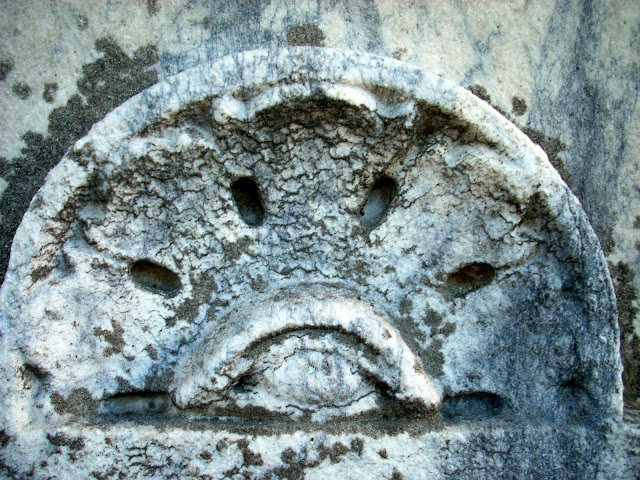
I paid the $5 admission fee and visited Mission Dolores cemetery this afternoon, just one block and a quick left turn from Spencer Alley. There were no other fleshly people in the place except for me. Tourists are scarce in San Francisco in November. The earliest dates I noticed on the stones came from the 1830s. None later than the 1880s. This is the graveyard Kim Novak visits in her stunning charcoal-colored suit about halfway through Hitchcock's Vertigo.





Marks on the top surface of the column above suggest there was once a statue on it. Even though the graveyard is well fenced and only accessible to the public at certain hours, there is much evidence of theft. Not much vandalism. More like intentional appropriation of charming vintage objects or fragments. Activity of that nature does make one long to believe in divine retribution.


This young widowed mother has been grieving on her knees for the past 150 years, all the while wearing what has to be one of the tightest corsets ever inflicted on the human form. Most of the gravestones were carved from some sort of too-soft stone, considering how badly they have weathered. Many figures are visibly fading back into the spirit-realm.






This last of the dissolving relief-carvings has an interesting little incongruous twist to it. On top of the pedestal it is just possible to make out an urn. There were numberless engravings in the early 1800s of families mourning around pedestals that supported urns containing the ashes of the departed. Problem is, this is a Roman Catholic cemetery, and always was. And the Roman Catholics in those old days forbid cremation with utmost strictness. They seemed to think that a burned-up dead body would be unable to reassemble itself on Judgment Day for a flight up to Heaven, as opposed to a body that had rotted into the earth without a trace. So the image on this gravestone slipped unobserved through the net of theological correctness. And in a few years more it will have slipped away into nothingness itself.



At first I thought this was just a decorative scallop, but then realized it represents the Eye of God, carved onto the side of an obelisk.


